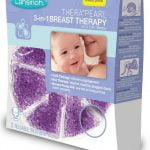Breastfeeding – When there is too much
Something as natural as breastfeeding can be so tricky and difficult to manage. At times you may experience that you are producing too much breastmilk. An oversupply of breastmilk typically occurs in the first few weeks of baby’s life as your milk supply adjusts to baby’s needs. This could also occur at any stage of breastfeeding, which may be due to changes in your babies eating habits. Example is you are cutting down breastmilk feeds to replace with formula feeds, baby has started solids, or you are weaning your little one entirely off breastmilk. I’ve personally experienced this at all stages of breastfeeding Isaac. This would typically lead to engorgement, where the breasts feel full, swollen and sore. On a few occasions this led to a blocked duct which then progressed to mastitis. Mastitis is inflammation of the breast which can be caused by a blocked milk duct, and it is extremely painful and uncomfortable. So, I would like to share some information I found useful when overcoming these issues.
Treating Engorgement and an increased milk supply:
- Try feeding your baby on demand rather than at set times to help remove more breastmilk from the breast.
- If your breasts feel sore and swollen, offer the breast to your little one for a feed to relieve the engorgement.
- Make sure your little one is latching properly onto the breast so that they’re able to adequately drain it.
- Use cold packs to relieve pain and warm packs just before a feed to help increase the flow of milk out of the breast. A good cold/hot pack I used to help with managing all this during breastfeeding is the Lansinoh 3 in 1 Thera Pearl Reusable Breast Packs. They are shaped to sit comfortably on the breast in your maternity bra in-between feeds or while you use a breast pump to express milk.

- Consider expressing some milk, but only enough to relieve the pressure, so that your body doesn’t continue to produce more milk.
- Offer only one breast at each feed, and if necessary you can try “block feeding”, where you offer only one breast at feeds for a block of time, such as over 3-4 hours to help temporarily reduce the production of milk. Once symptoms are relieved return to offering both breasts at a feed.
Treating a Blocked Milk Duct:
If you feel a sore lump in your breast, an area of the breast is red and swollen, or you can see a milk blister on the nipple this may be an indication of a blocked duct. The blocked duct is more painful and any lump will be larger before feeds and improve after. It is important to start treatment ASAP. Make sure you feed your baby often and on demand to help unblock the duct. Massaging the breast with the lump while baby is feeding or while you express milk will help remove the lump. Also using warm packs on the affected breast while feeding/expressing will help to remove it. If you’re in a lot of pain you can use Ibuprofen or Paracetamol as pain relief.
Blocked ducts may also occur due to stress, or anything applying pressure onto the breast such as a tight bra. So it is important to make sure you are getting enough rest, sitting relaxed for a feed, your maternity bra is comfortable and without any underwire so that it is able to move with the size of your breasts and you wear loose fitting clothes to avoid restriction.
Treating Mastitis:
Hopefully you’ve tried all the above and you’ve avoided mastitis, but if you feel the breast is extremely sore, red and you feel unwell with symptoms like body aches, chills and a fever (temperature equal to or greater than 38.5 degrees Celsius) this means that the blocked duct has caused inflammation in the breast which is known as mastitis.
To overcome mastitis you need to do all you would have done for the blocked duct. Focus on the inflamed breast and get baby to feed/express as often as possible to drain it, despite how painful it will be. You can use cold packs between feeds and Ibuprofen or Paracetamol as pain relief. If you’re draining the affected breast and there are no improvements in your symptoms within 24 hours or you feel very unwell you will need to see a doctor as soon as possible to take a course of antibiotics, as you may have developed an infection. The antibiotics will treat the infection and prevent the condition further developing into an abscess (which is rare).
Some useful websites with more information include:
- Kelly Mom: https://kellymom.com/bf/concerns/mother/mastitis/
- Australian Breastfeeding Association: https://www.breastfeeding.asn.au/bf-info/common-concerns–mum/mastitis
Always check in with your Pharmacist or GP if you have any concerns. If you find that your milk supply is difficult to manage or you are having any other difficulties breastfeeding you might want to speak to your GP for a referral to see a lactation consultant who may be able to assist you. Lactation consultants can also be seen privately and you can find one close to you using their website: https://www.lcanz.org/find-a-lactation-consultant/
Sending all mums and mums to be good vibes on your breastfeeding journey.
Signing Out,
Sandra #everymumspharmacist











